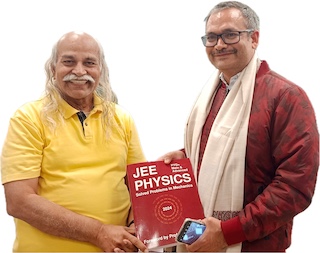Verification of Boyle's Law
Everyone is familiar with Boyle's law \(PV = \text{constant}\) if the temperature remains constant. You will measure and vary \(P\) and \(V\) for a trapped mass of air and see how good your system follow Boyle's law.
Procedure
You need a syringe with one end closed and some air trapped in it, an identical extra syringe, support system for keeping the syringe fixed in vertical position, a pan suspended from the lower end of the syringe barrel, known weights.
Suppose, you put a weight \(W\) in the pan. The piston will slide down and will stay at some position. Suppose, the pressure inside is \(P\) and area of inner cross section is \(A\). Let the weight of the piston plus the pan is \(W_0\). Atmospheric Pressure = \(P_0\). For equilibrium, \(PA+W+W_0=P_0A\) or \(P=(P_0A-W-W_0)/A\) or \(nRTA({1}/{V})=(P_0A-W_0)-W\). Thus if you plot \(1/V\) versus \(W\), it should be a straight line.
So, look at the volume with zero weight. Then increase the weight in steps and every time measure the volume. Make a table and calculate \(1/V\) for each value. Plot a graph \(1/V\) versus \(W\).
The piston and the barrel will have some friction. The piston can stay at different positions for the same weight. So you have to carefully determine the volume corresponding to a given weight. One way is to pull the piston a little and release, see where it stays while going up. Then push it a little and release, see where it stays while coming down. Take the average.
Related
Subscribe to our channel
